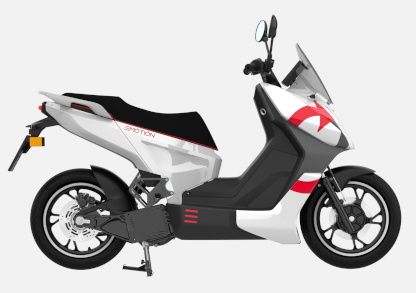A user study with 19 participants being representative for the target user groups was performed and different ergonomic seating positions as well as different tunnel configurations for getting on/off were analysed. In comparison with benchmark vehicles that are especially good by means of ergonomics, a final ergonomic setup was defined. Ergonomic evaluations of specific seating positions as well as evaluations of different tunnel geometries due to different geometries of the battery packs, influencing the ergonomics when getting on and off the vehicle, were analysed on a fully adjustable ergonomic test bench . Based on these evaluations an optimum ergonomic design was created.
The extremities of the riders were measured in length and the angle between them in three different seating positions. Thus, not only the influence of the body height and the weight of the participants was analysed, but also the influence of the extremities and corpus sizes could be investigated. In order to quantify the comfort of the different seating positions, a static discomfort measurement took place aiming at the relevant body joints using questionnaires.
Taking evidence of all results of the comfort evaluation the chosen final ergonomic setup comes closest to the optimum seating position, although there is still a potential of improvement. This setup can be seen as the best compromise for the intended target group as e.g., there is a high diversity in the body size.
Regarding the tunnel geometry, the battery concept with tree removeable batteries below the footrest is preferred due to the advantages for the driving behaviour (low centre of gravity) and the free space below the seat that can be used as luggage space – the online user survey revealed, that a main need for the target group is a large luggage space.
Below, an impression of the ergonomics user study on the fully adjustable ergobike can be seen. Three different battery pack and tunnel geometries as well as getting on and off the vehicle were analysed.
© KISKA GmbH & KTM Technologies GmbH

